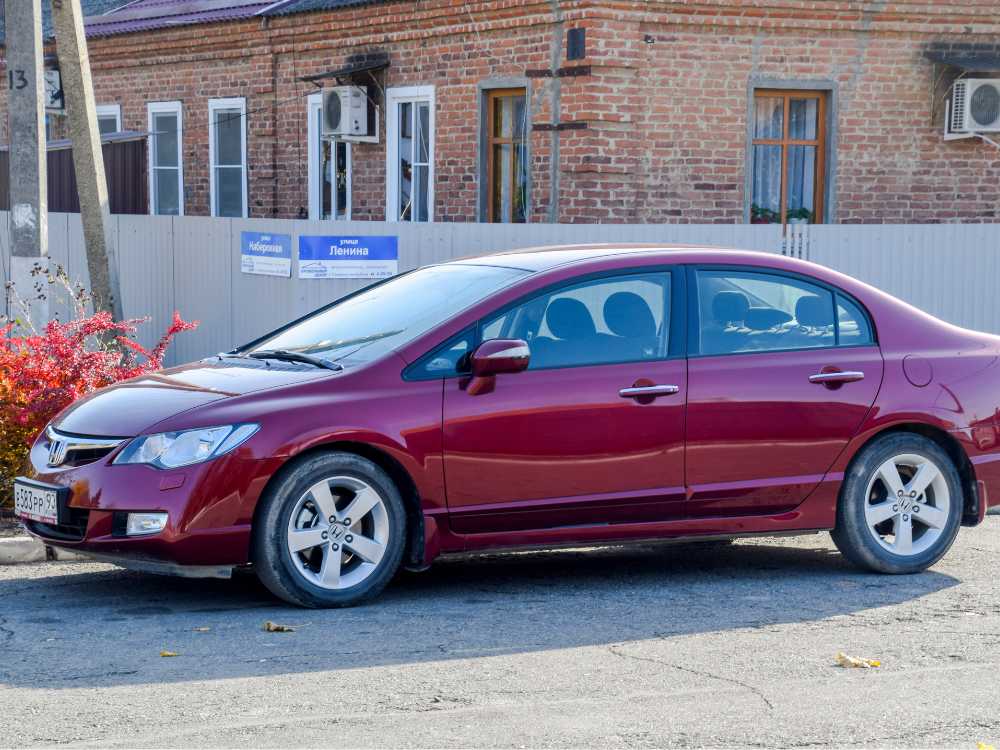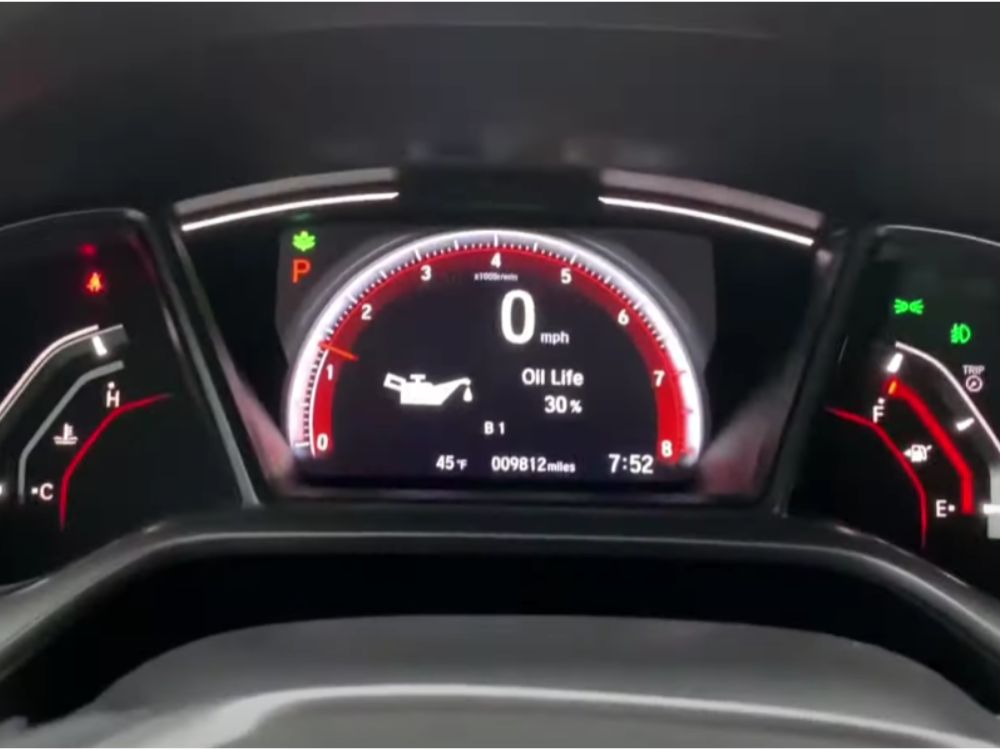Monday to Saturday - 9:00 am -18:00 pm

If you’ve seen a “B1” service code flash on your Honda’s dashboard, don’t panic—it’s not a secret code or a mysterious car malfunction. It’s your Honda’s way of saying: “Hey, I need a little love—let’s do some routine maintenance!”
The Honda Maintenance Minder System is an intelligent onboard reminder system designed to keep your vehicle in top shape without you having to memorize every maintenance schedule in your manual. Instead of relying on guesswork, it monitors your engine’s performance, mileage, and driving habits, and then gives you codes like A1, B1, or B123 to tell you exactly what services are due.
In this guide, we’ll focus specifically on Honda’s B1 service, what it includes, how much it typically costs, how to reset it, and why it’s important not to ignore it.
What Is Honda B1 Service?
Let’s break it down:
- “B” = Major service. This includes a mechanical inspection, oil and oil filter change, and a full check of key components.
- “1” = Tire rotation.
Put them together, and you get: Honda B1 = Oil & filter change + Tire rotation + System inspections.
Whether you’re driving a Civic, Accord, CR-V, or Pilot, the B1 service is a common code you’ll see around the 15,000-mile mark (or one year of driving, depending on how often and how hard you drive).

Honda B1 Service Checklist
Here’s what’s typically included when your Maintenance Minder lights up with B1:
Main Code “B” Includes:
- Replace engine oil and oil filter
- Inspect brake system (front & rear)
- Check parking brake adjustment
- Inspect brake lines and hoses
- Inspect suspension components
- Inspect exhaust system
- Inspect driveshaft boots
- Inspect fluid levels and condition
- Inspect fuel lines and connections
- Inspect tie rod ends, steering gear box, and boots
Sub-Code “1” Includes:
- Rotate tires
- Inspect tire condition and adjust air pressure
- Check for uneven tire wear or damage
This is more than a quick oil change—it’s a full check-up to make sure your car’s systems are safe and working properly.
How Much Does Honda B1 Service Cost?
The cost of Honda B1 service can vary based on your location and whether you’re at a dealership or an independent shop. Here’s a general estimate:
| Service Item | Estimated Cost Range |
|---|---|
| Oil & Filter Change | $45 – $90 |
| Tire Rotation | $20 – $40 |
| Mechanical Inspection | Often included |
| Total Estimated Cost | $80 – $160 |
Dealerships tend to charge more but may also include additional checks and genuine Honda parts.
When Should You Get a Honda B1 Service?
Your Honda’s Maintenance Minder doesn’t just pick a random time to flash the B1 code—it’s based on real-time driving data like engine temperature, speed, and mileage. But in general, you’ll likely see the B1 service code around 7,500 to 15,000 miles.
Common Signs It’s Time for B1 Service (Even If the Code Hasn’t Shown Yet):
- Oil life percentage has dropped below 15%
- You haven’t rotated your tires in the last 6 months
- Brake performance feels off
- You’re nearing your regular 12-month maintenance window
Even if your dashboard isn’t lighting up yet, it’s smart to stay ahead of the curve and get the B1 service done if it’s been a while.
How to Reset the Honda B1 Service Code
Once your service is completed, the B1 code won’t disappear automatically—it needs to be reset. You can either ask your mechanic to reset it or do it yourself. Here’s how:
Method 1: Using Steering Wheel Controls (Most Honda Models)
- Turn on the ignition (don’t start the engine).
- Use the steering wheel buttons to navigate to “Maintenance Info” on the dashboard.
- Press and hold the Enter or SEL/RESET button for 10 seconds.
- Select “Reset” when the menu pops up.
- Turn off the ignition and restart the car. The B1 code should be cleared.
Method 2: Using the Touchscreen (Newer Models)
- Turn on the vehicle without starting the engine.
- Go to the Home screen on the infotainment display.
- Select Settings > Vehicle > Maintenance Info.
- Tap Reset and confirm.
- Restart your vehicle to verify the code is gone.
Can You Do Honda B1 Service Yourself?
If you’re a DIY enthusiast and know your way around a toolbox, you can perform parts of the B1 service at home:
What You Can Do:
- Oil & Filter Change – Requires an oil filter wrench, drain pan, and the right oil (typically 0W-20 for most Hondas).
- Tire Rotation – You’ll need a jack and a torque wrench.
- Basic Inspections – Look for signs of wear, fluid levels, and brake pad thickness.
What’s Best Left to a Pro:
- Suspension checks
- Brake hose inspection
- Exhaust and fuel line assessments
- System diagnostics
Unless you’re confident, it’s safer (and warranty-friendly) to let a Honda-certified mechanic handle the mechanical inspection.
Benefits of Getting Honda B1 Service on Time
Following your Honda’s B1 service schedule isn’t just about avoiding warning lights—it actually helps your car in multiple ways:
- ✅ Improves fuel efficiency
- ✅ Extends engine life
- ✅ Prevents uneven tire wear
- ✅ Keeps your warranty valid
- ✅ Reduces long-term repair costs
- ✅ Increases resale value
Skipping or delaying B1 service might save you money today—but it’ll likely cost more in repairs down the road.
How to Find the Right Place for B1 Service
Not all service centers are equal. Here are some tips to help you choose wisely:
- Go to a Certified Honda Service Center – They use genuine parts and know your vehicle inside and out.
- Read Reviews – See what other Honda owners say about the place.
- Ask What’s Included – Some shops include extras like fluid top-offs or brake inspections at no extra cost.
- Compare Prices – Call a couple of shops to find a fair deal without sacrificing quality.
Frequently Asked Questions (FAQs)
What does the “B” mean in Honda B1?
The letter “B” stands for a mechanical inspection, oil change, and oil filter replacement.
What does the “1” mean in B1?
The “1” is a sub-code that means rotate your tires and inspect their condition.
How often should B1 service be done?
Typically once a year or around 7,500 to 15,000 miles, depending on your driving habits.
Can I ignore the B1 code?
Technically yes, but it’s not recommended. Ignoring maintenance reminders can lead to performance issues and bigger problems later.
How do I know if the B1 service was reset?
After service, your Oil Life should reset to 100% and the B1 code will disappear from your dashboard.
Final Thoughts
Your Honda is great at taking care of you—so take care of it in return. The B1 service code isn’t a warning sign of doom, it’s just a friendly nudge from your car saying, “Let’s stay in good shape.”
Whether you head to the dealership or use your trusted mechanic, getting your B1 service done on time means your Honda will keep running like a dream—and you’ll avoid unexpected headaches on the road.
Need help locating a reliable shop or resetting your service code? Just follow this guide or consult your owner’s manual. B1 might sound boring, but trust us—it’s essential maintenance with benefits you’ll feel every time you drive.